Sean B. Holden
Neural Embeddings for Protein Graphs
Jun 07, 2023



Abstract:Proteins perform much of the work in living organisms, and consequently the development of efficient computational methods for protein representation is essential for advancing large-scale biological research. Most current approaches struggle to efficiently integrate the wealth of information contained in the protein sequence and structure. In this paper, we propose a novel framework for embedding protein graphs in geometric vector spaces, by learning an encoder function that preserves the structural distance between protein graphs. Utilizing Graph Neural Networks (GNNs) and Large Language Models (LLMs), the proposed framework generates structure- and sequence-aware protein representations. We demonstrate that our embeddings are successful in the task of comparing protein structures, while providing a significant speed-up compared to traditional approaches based on structural alignment. Our framework achieves remarkable results in the task of protein structure classification; in particular, when compared to other work, the proposed method shows an average F1-Score improvement of 26% on out-of-distribution (OOD) samples and of 32% when tested on samples coming from the same distribution as the training data. Our approach finds applications in areas such as drug prioritization, drug re-purposing, disease sub-type analysis and elsewhere.
Building a 3-Player Mahjong AI using Deep Reinforcement Learning
Feb 25, 2022

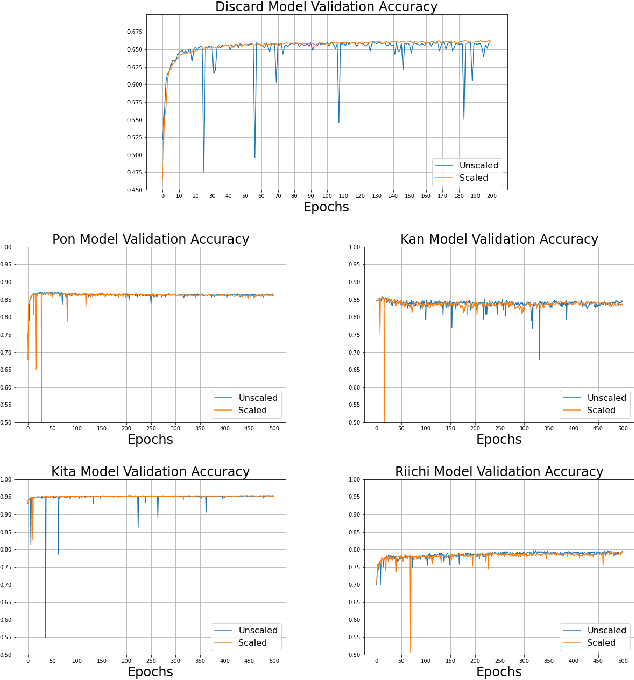
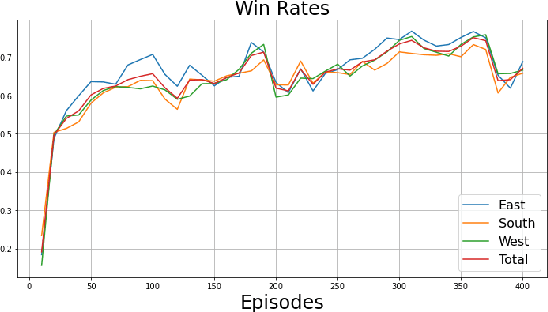
Abstract:Mahjong is a popular multi-player imperfect-information game developed in China in the late 19th-century, with some very challenging features for AI research. Sanma, being a 3-player variant of the Japanese Riichi Mahjong, possesses unique characteristics including fewer tiles and, consequently, a more aggressive playing style. It is thus challenging and of great research interest in its own right, but has not yet been explored. In this paper, we present Meowjong, an AI for Sanma using deep reinforcement learning. We define an informative and compact 2-dimensional data structure for encoding the observable information in a Sanma game. We pre-train 5 convolutional neural networks (CNNs) for Sanma's 5 actions -- discard, Pon, Kan, Kita and Riichi, and enhance the major action's model, namely the discard model, via self-play reinforcement learning using the Monte Carlo policy gradient method. Meowjong's models achieve test accuracies comparable with AIs for 4-player Mahjong through supervised learning, and gain a significant further enhancement from reinforcement learning. Being the first ever AI in Sanma, we claim that Meowjong stands as a state-of-the-art in this game.
Exploring Structural Inductive Biases in Emergent Communication
Feb 04, 2020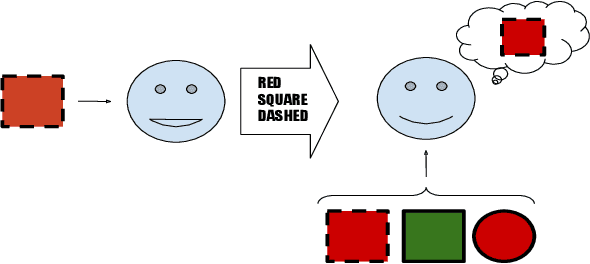

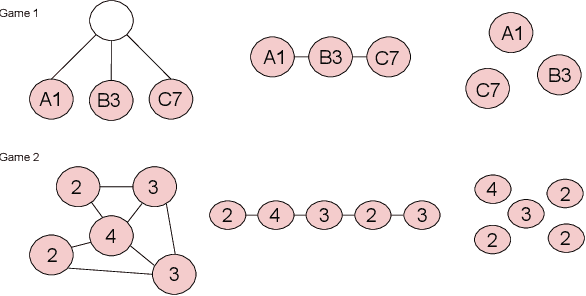
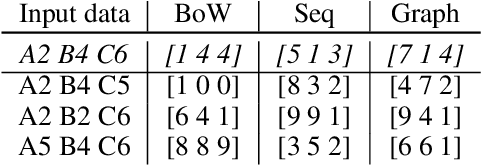
Abstract:Human language and thought are characterized by the ability to systematically generate a potentially infinite number of complex structures (e.g., sentences) from a finite set of familiar components (e.g., words). Recent works in emergent communication have discussed the propensity of artificial agents to develop a systematically compositional language through playing co-operative referential games. The degree of structure in the input data was found to affect the compositionality of the emerged communication protocols. Thus, we explore various structural priors in multi-agent communication and propose a novel graph referential game. We compare the effect of structural inductive bias (bag-of-words, sequences and graphs) on the emergence of compositional understanding of the input concepts measured by topographic similarity and generalization to unseen combinations of familiar properties. We empirically show that graph neural networks induce a better compositional language prior and a stronger generalization to out-of-domain data. We further perform ablation studies that show the robustness of the emerged protocol in graph referential games.
Towards Graph Representation Learning in Emergent Communication
Feb 04, 2020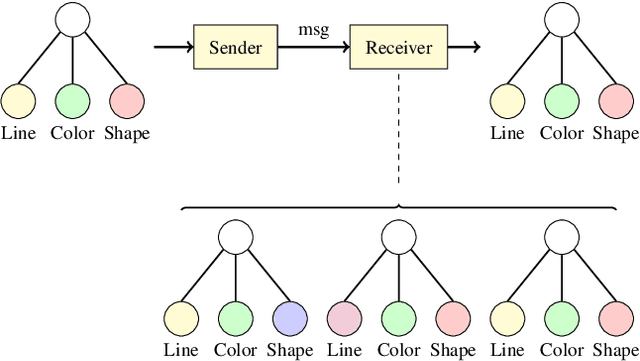



Abstract:Recent findings in neuroscience suggest that the human brain represents information in a geometric structure (for instance, through conceptual spaces). In order to communicate, we flatten the complex representation of entities and their attributes into a single word or a sentence. In this paper we use graph convolutional networks to support the evolution of language and cooperation in multi-agent systems. Motivated by an image-based referential game, we propose a graph referential game with varying degrees of complexity, and we provide strong baseline models that exhibit desirable properties in terms of language emergence and cooperation. We show that the emerged communication protocol is robust, that the agents uncover the true factors of variation in the game, and that they learn to generalize beyond the samples encountered during training.
Bayesian Optimisation with Gaussian Processes for Premise Selection
Sep 18, 2019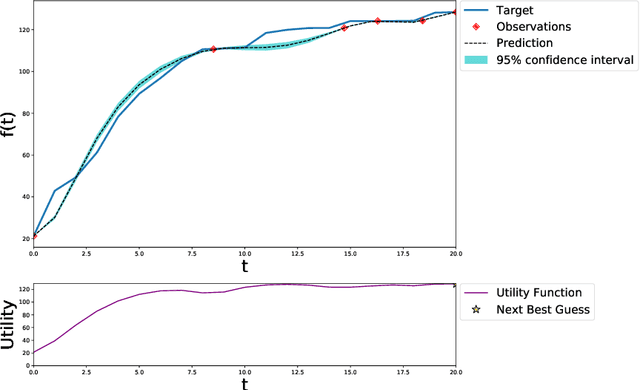
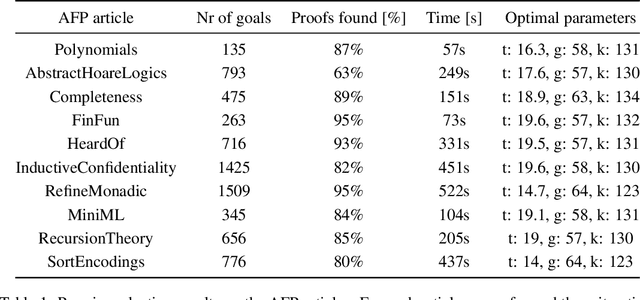
Abstract:Heuristics in theorem provers are often parameterised. Modern theorem provers such as Vampire utilise a wide array of heuristics to control the search space explosion, thereby requiring optimisation of a large set of parameters. An exhaustive search in this multi-dimensional parameter space is intractable in most cases, yet the performance of the provers is highly dependent on the parameter assignment. In this work, we introduce a principled probablistic framework for heuristics optimisation in theorem provers. We present results using a heuristic for premise selection and The Archive of Formal Proofs (AFP) as a case study.
 Add to Chrome
Add to Chrome Add to Firefox
Add to Firefox Add to Edge
Add to Edge